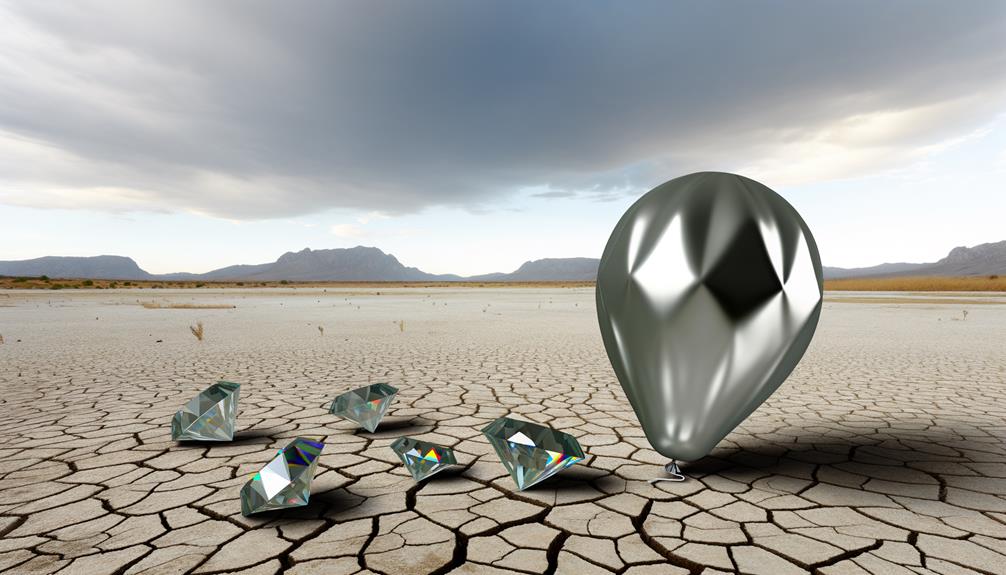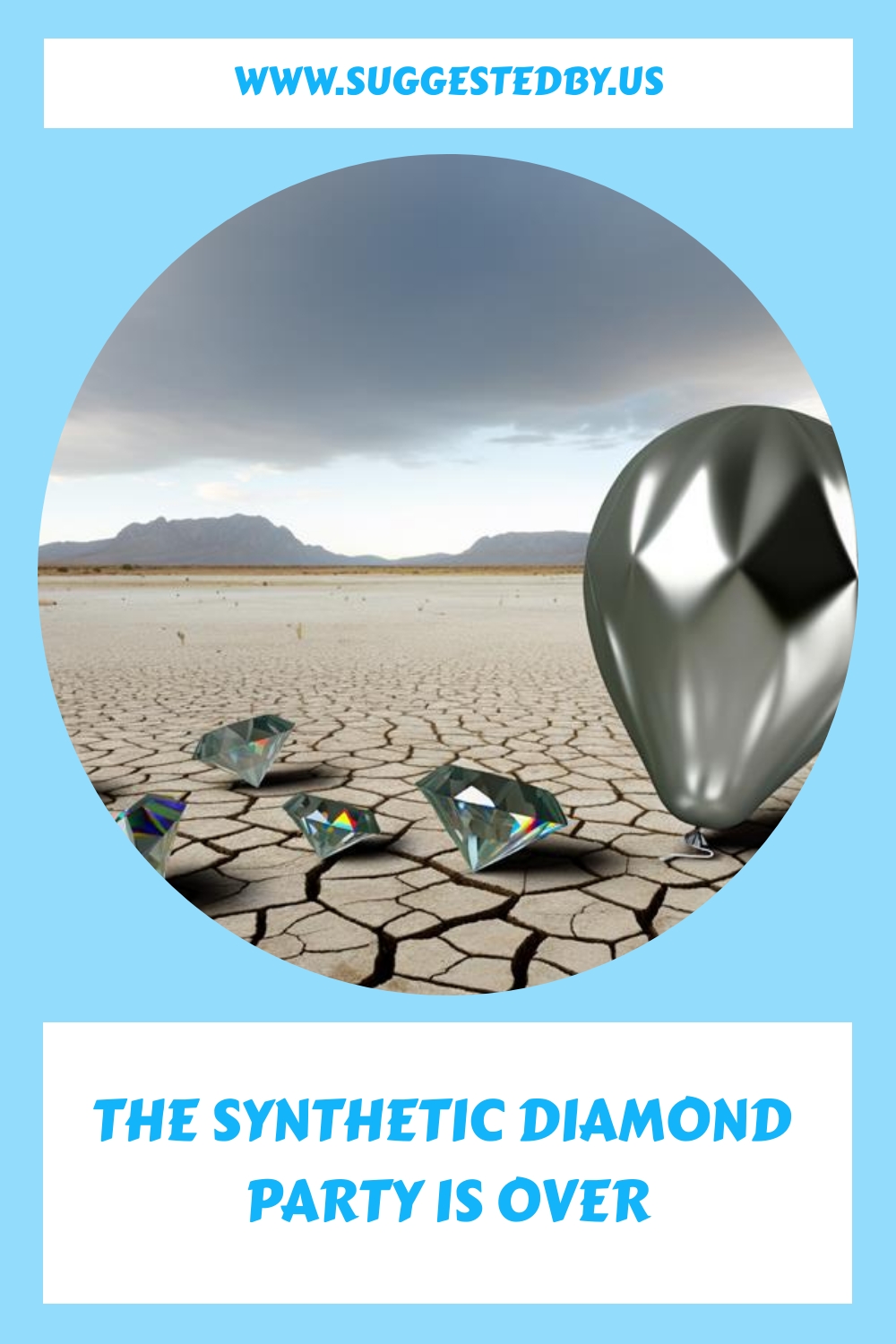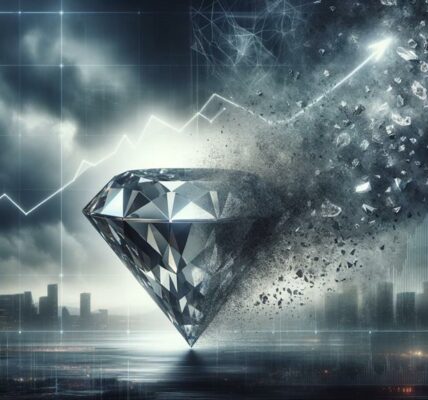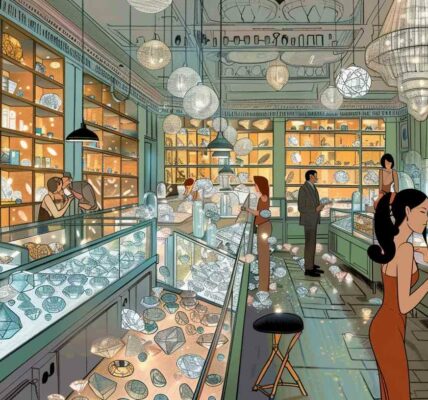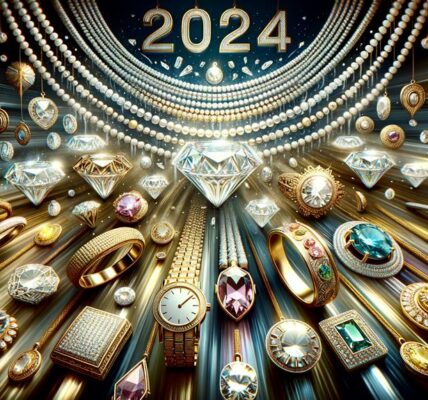The Synthetic Diamond Dilemma: Navigating Sustainability, Ethics, and Market Realities
You might’ve heard about the buzz surrounding synthetic diamonds as the future of jewelry: they’re eco-friendly, affordable, and just as sparkly as their natural counterparts. But it appears the sparkle is dimming. Synthetic diamonds come with their own environmental baggage, chugging down a massive 250 tons of water and emitting 1.5 times the carbon compared to natural ones per carat produced. Their creation isn’t just resource-intensive but also spews waste and chemicals, raising eyebrows about their green credentials. The market’s shifting too, with prices tumbling and consumers reevaluating what value and ethics they support with their wallets. Mix in certification mishaps, where the full environmental impact might not hit the labels, leading to a synthetic diamond dilemma. The synthetic diamond party might be winding down.
As you peel back the layers, you’ll uncover the intricate dance between sustainability, ethics, and the ever-evolving diamond market.
Article Contents
- 1 Key Takeaways About the Synthetic Diamond Dilemma
- 2 The Environmental Debate
- 3 Certification Controversies
- 4 Market Shifts and Prices
- 5 Sanctions and Supply Chains
- 6 Ethical Sourcing Challenges
- 7 Synthetic Diamonds Undermine The Value of Diamonds in Jewelry
- 8 Frequently Asked Questions
- 9 Conclusion
- 10 Further Reading About The Industry’s Synthetic Diamond Dilemma
Key Takeaways About the Synthetic Diamond Dilemma
- Synthetic diamond prices have plummeted due to oversupply and decreased demand.
- Environmental concerns and high carbon emissions challenge the sustainable image of synthetic diamonds.
- Market shifts see a 30% drop in natural diamond demand, affecting the entire industry.
- Certification inaccuracies and a lack of transparency erode consumer trust in synthetic diamonds.
- Sanctions and supply chain disruptions impact the synthetic diamond sector, complicating production and distribution.
The Environmental Debate
The environmental debate surrounding synthetic diamonds is intensifying as the industry’s water consumption, carbon emissions, and waste generation raise significant concerns. You might think synthetic diamonds are just shiny bits of tech wizardry, but there’s much more behind the scenes.
For starters, producing just one carat of these gems guzzles an astounding 250 tons of water. That’s a lot of H2O!
But wait, it gets worse. The carbon emissions from making these sparkly stones are 1.5 times higher than digging up natural ones. Plus, the factories need heaps of electricity, which just adds to the carbon footprint. And after all that, there’s still a pile of waste to deal with.
It’s not just the leftovers from production; it’s also the chemicals used in the process. These can be pretty nasty, posing risks to both the folks working there and the nearby communities.
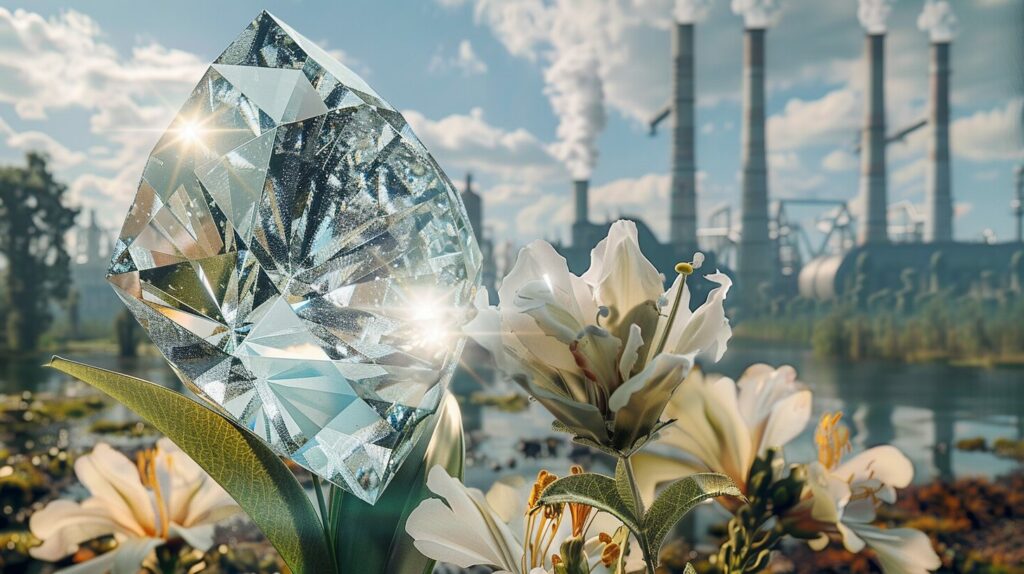
Certification Controversies
Amid escalating environmental concerns, scrutiny now intensifies around the certification bodies responsible for evaluating synthetic diamonds, highlighting significant gaps in their assessment criteria. You’re now in the thick of a debate where the sparkle isn’t just about the diamonds but also the controversy surrounding their certification. With concerns over defects, environmental impacts, and the need for more stringent regulations, it’s clear there’s more to these glittering gems than meets the eye.
Consider the pressing issues facing synthetic diamond certification:
- Defects like premature ageing are often glossed over, leaving you wondering about the longevity of your purchase.
- Environmental impacts of creating these diamonds don’t always make it into the final certification report, raising questions about their true cost to our planet.
- Accuracy and thoroughness of these certifications are under the microscope, suggesting that not all that glitters are accurately represented.
- More rigorous regulations are being called for to ensure certifications reflect the true nature of synthetic diamonds, from creation to final product.
As you delve deeper into the world of synthetic diamonds, it’s clear that certification isn’t just a stamp of approval but a complex conversation involving defects, environmental impacts, and the need for tighter regulations to safeguard both the planet and consumer trust.
Market Shifts and Prices
As synthetic diamond prices plummet, you might find yourself questioning the investment’s value, given the industry’s recent shifts and the unexpected drop in demand for natural diamonds. This market turmoil has caused a significant shake-up, with prices of synthetic diamonds taking a nosedive. You’re not alone if you’re feeling the pinch, especially if you jumped on the bandwagon when prices were sky-high.
The natural diamond industry isn’t faring much better, with a predicted 30% drop in demand. It’s a ripple effect that’s hit hard, leading to a 24% profit plunge for companies like Gem Diamonds in 2023 alone. While synthetic diamonds once promised a revolution, the current market shifts suggest a reevaluation of their sparkle.
What does this mean for you? If you’re eyeing diamonds, synthetic or natural, it’s a buyer’s market. Prices are weak, and with leading companies previously supporting synthetics despite foreseeing a price crash, there’s a lot to ponder. As the natural diamond industry scrambles to regain footing, it’s clear the glitter isn’t just from the diamonds but from a market in flux, reflecting the changing values and demands of consumers worldwide.
Sanctions and Supply Chains
Shifting focus from market trends, you’ll notice sanctions are now greatly affecting diamond shipments, particularly in Antwerp, where traders report considerable delays. The diamond industry, including the synthetic gem sector, is feeling the chokehold of these restrictions. With the spotlight on Russian production, which is a significant player in the market, the sanctions impact is more pronounced than ever.
Here are some key points to keep in mind:
- Sanctions are causing delays in diamond shipments, disrupting the flow of goods.
- 146 Belgian companies have complained about severe supply chain disruptions.
- The synthetic gem sector relies heavily on Russian production, which is now under threat.
- Luxury brands are investing in synthetic diamonds, trying to navigate the uncertain market conditions.
Supply chain disruptions aren’t just a buzzword; they’re a reality hitting the diamond industry hard. The reliance on Russian production has placed the synthetic gem sector in a precarious position. As sanctions tighten, the industry is forced to adapt, seeking alternative sources and strategies to keep the sparkle in the diamond trade. You’re witnessing a significant shift where resilience and innovation become vital for survival.
Ethical Sourcing Challenges
You’ll find that ethical sourcing in the diamond industry faces significant challenges, especially with the mixing of synthetic and natural diamonds often going undisclosed. This situation creates a web of ethical concerns, as consumers struggle to understand what they’re truly buying. Without clear information, the trust you place in your favorite jewelry brands could begin to waver.
Synthetic diamonds, while offering a more environmentally friendly option, throw a wrench in the works when they’re not transparently sourced. This lack of transparency not only raises doubts about the ethical practices behind these gems but also complicates the landscape for those trying to make responsible choices. Imagine buying what you think is a natural diamond, only to discover it’s synthetic and possibly sourced under dubious conditions.
Jewelry retailers themselves might be in the dark, selling products with undisclosed synthetic diamonds, further eroding consumer trust. It’s a tangled situation where the ethical sourcing of both synthetic and natural diamonds becomes muddled, making it hard for you to be sure of the ethicality of your diamond purchases. This challenge in the industry underscores the need for clearer standards and more honest communication, ensuring you can make informed decisions aligned with your values.
Synthetic Diamonds Undermine The Value of Diamonds in Jewelry
The introduction of synthetic diamonds into the market has greatly undermined the perceived value of natural diamonds in jewelry. As you’ve likely noticed, the sparkle on that ring doesn’t just come from any stone; it’s the story and rarity behind it that have traditionally made diamonds so coveted. But, with synthetic diamonds shaking up the scene, here’s what’s happening:
- Unlimited Supply: Unlike natural diamonds, synthetic ones can keep being produced, which lowers their rarity and, in turn, their value.
- Reputation Damage: The diamond market has always thrived on the allure of natural diamonds. Synthetic diamonds have started to tarnish this reputation, making consumers second-guess the worth of what they’re buying.
- Consumer Backlash: People who bought synthetic diamonds at high prices are now facing the reality of their depreciating value, leading to distrust in the diamond trade.
- Impact on Demand: The influx of synthetic diamonds has led to a significant drop in demand for natural diamonds, a trend that might take years to reverse.
In essence, synthetic diamonds have created a ripple effect, challenging the value and reputation of natural diamonds in the jewelry sector. As the diamond market navigates this turbulent time, it’s clear that the sparkle isn’t just about the stone, but also the trust and tradition it represents.
Frequently Asked Questions
What Is the Future of Synthetic Diamonds?
You’re wondering about the future of synthetic diamonds. It’s murky, with falling prices and growing concerns over accuracy and environmental impact. Stricter regulations may reshape the market, influencing how you view and buy diamonds.
Are People Buying Lab-Created Diamonds?
Yes, people are still buying lab-created diamonds despite growing concerns. They’re popular for their lower cost and ethical appeal. However, changing market dynamics and regulatory pressures might influence future purchasing decisions. Keep an eye on trends.
How Big is the Synthetic Diamond Market?
You’re looking into how vast the synthetic diamond market is, right? It’s expected to hit $28 billion by 2035, even as it currently makes up 2.1% of the global market. That’s substantial growth on the horizon.
What Is the Meaning of Synthetic Diamond?
A synthetic diamond is a man-made gem, created in a lab using advanced technology. It’s made of carbon atoms, just like natural diamonds, offering a more ethical and often less expensive alternative.
Conclusion
In sum, you’ve seen the rise and fall of synthetic diamonds, sparking debates over their environmental impact and authenticity.
As the market shifts, natural diamonds may become more appealing, especially with efforts to guarantee they’re ethically sourced. Despite challenges like sanctions disrupting supply chains, there’s a push for transparency in the diamond industry.
It’s evident that both types of diamonds have their place, but it’s essential we prioritize the planet and fairness in our sparkling pursuits.
The synthetic diamond dilemma is real. We feel that there are turbulent times ahead, and all stakeholders in natural and lab-grown diamond supply chains, from production to retailers, must be aware of the issues. At the same time, they should take care not to devalue one type of diamond over another because to do so will affect the whole industry. Most stakeholders do not want to see a situation where diamonds as a gemstone become less desired for fine jewellery because, in such a situation, all will lose out!
Further Reading About The Industry’s Synthetic Diamond Dilemma
1: The Synthetic Diamond Party is Over
2: Synthetic Diamond Shake Up
3: How Synthetic Diamonds are Upending the Industry’s Status Quo
4: Industry-Insider Rapaport Lashes Out Against Lab-Grown Diamonds To No Avail
5: De Beers Continues Crusade Against Synthetic Diamonds in NYC
